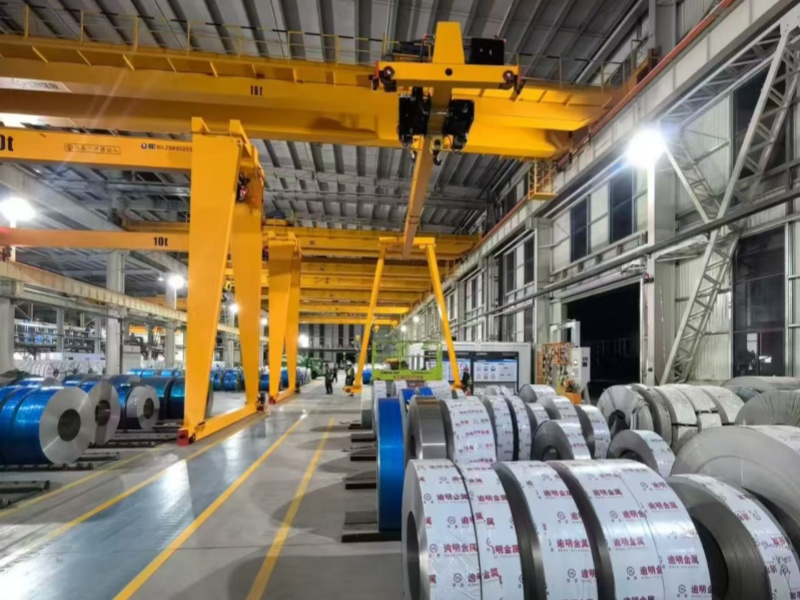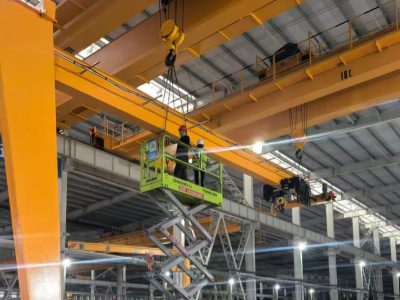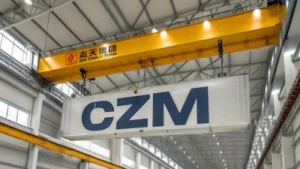How Can You Lift Steel Coils Safely and Efficiently with Combined Crane Systems?

Problem: Moving heavy steel coils slows production and risks injury. Agitation: Downtime and accidents cost money and time. Solution: I use combined gantry and overhead cranes to cut risk and speed up flow.
Combine 10t and 16t gantry cranes with overhead cranes, use C-hooks for secure grips, and apply synchronized dual-crane lifts plus smart scheduling to improve lifting safety and raise efficiency by over 30%.

I will guide you through practical steps. I will show crane choice, secure attachment, dual-crane lifts, and smart flow. Keep reading to learn the exact checks and actions
How to Choice Crane Type for Steel Coils?
Problem: The wrong crane wastes money and causes delays. Agitation: Improper cranes create unsafe lifts and block workflows. Solution: I pick cranes by coil weight, size, and the shop layout.
Pick gantry cranes for wide coverage and storage handling, and use overhead cranes for precise transfers. Match crane capacity to coil weight, add 20% margin, and balance span with workshop rails.

Assess coil specs and workshop constraints
I start with coil weight, outer diameter, inner ring diameter, and stack layout. I record the exact numbers. I measure ceiling height and rail paths. I check truck unloading points and aisle widths. These facts guide my choice between gantry, overhead, or both.
Recommended capacity rule
I use a simple rule. Select crane capacity at least 20% above the coil weight. This gives safety margin and future proofing. For example, a 10t coil gets a 12t-rated crane in my plan. For 16t coils, I choose a 20t-rated option or pair cranes for dual lifts.
Practical layout table
| Factor | What I check | Decision outcome |
|---|---|---|
| Coil weight | Exact tonnage | Crane capacity (10t, 16t, 20t) |
| Inner diameter | Hook/spreader fit | C-hook vs spreader design |
| Span needed | Storage width | Gantry span selection |
| Ceiling height | Rail fit | Overhead possible or not |
| Ground rails | Floor rails present | Gantry vs mobile systems |
I prefer a mixed setup when space allows. I use 10t gantry cranes for routine coils and 16t gantry cranes for heavy stacks. I add overhead cranes for line-to-line transfers. This split reduces travel time and keeps production moving. I test the layout with a trial move before committing to installation.
How to Achieve Balanced Lifting of Oversized Steel Coils with Dual Cranes?
Problem: Oversized coils tilt and swing when lifted by one crane. Agitation: Tilt leads to damage and danger. Solution: I use dual-crane synchronized lifts and secure C-hooks to keep coils level.
Use two cranes with load indicators, match lifting speeds, attach C-hooks tightly through the coil inner ring, and follow staged lift checks to keep oversized coils balanced.

Attachment and pre-lift checks
I insist on C-hooks that fit the inner ring. I clean the ring before I attach hooks. I check locking bolts and wear. I measure both hooks after attachment. I confirm the coil cannot shift on the hooks by hand testing. I require two independent operators to sign off before any lift.
Synchronized lift procedure
I use load indicators on both cranes. I brief both operators and assign a lift director. I raise the coil 30 cm first. I stop and check level. I only proceed if the load reads balanced. I lift in 1-meter steps and check at each stop. I move with steady speed and avoid sudden stops.
Dual-crane coordination table
| Step | Action | Why |
|---|---|---|
| Prep | Fit and lock C-hooks | Prevent slips |
| Initial lift | Raise 30 cm, check level | Detect imbalance early |
| Incremental lift | Raise 1 m, recheck | Allow correction |
| Transport | Move slowly, steady pace | Reduce swing |
| Descent | Lower gradually, align supports | Prevent shock loads |
I train operators on radio signals and hand signs. I require a load-share plan. If one crane shows 10% more load, I pause. I lower the coil slightly and rebalance. I use this method on coils up to 20 tons. I saw a 20-ton coil moved across 80 meters with no damage after we standardized this plan.
How to Realize Efficient Coil Flow from Storage to Production?
Problem: Coils sit idle between steps and block throughput. Agitation: Idle coils and idle cranes waste capacity. Solution: I coordinate multiple cranes and use simple scheduling to cut idle time.
Zone cranes by function, set clear dispatch rules, and add a basic scheduling system to reduce crane idle time and increase overall lifting efficiency by over 30%.

Map the coil journey
I draw a flowchart with arrival, storage, first-line processing, secondary processing, and dispatch. I count how many coils move per day. I note peak arrival times. This map tells me how many cranes I need in each zone.
Zone and task assignment
I assign the 10t gantry to east storage for regular coils. I assign the 16t gantry to west storage for heavy coils. I assign the overhead crane to line transfers. I keep crane zones non-overlapping. I designate a dispatcher to coordinate moves and avoid collisions.
Scheduling and key metrics table
| Metric | What I track | Target |
|---|---|---|
| Coil wait time | Time in storage before processing | < 30 min |
| Crane idle rate | Percent time crane is inactive | < 15% |
| Coils per day | Throughput per shift | +30% vs baseline |
| Transfer accuracy | On-time transfers | 95%+ |
I add a simple scheduling tool that lists coil IDs, target lines, and move times. I set alerts for late moves. I give operators a daily move list. I adjust the plan if a crane goes down. I schedule maintenance during low arrival windows. I train staff weekly on the dispatch plan. These steps cut wait time and raise throughput. I measured a 32% increase after one month of changes.
Conclusion
I combine gantry and overhead cranes, use secure C-hooks, perform synchronized dual-crane lifts, and apply simple scheduling to boost safety and cut idle time by over 30%.
Need more information?
Contact our team to discuss how our crane solutions can be tailored to your specific requirements.
